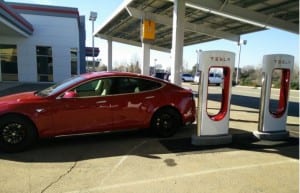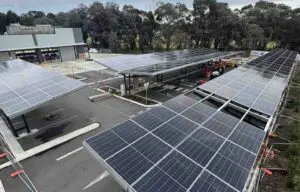 The recent half year results from market heavies AGL, Origin and EnergyAustralia provide some insights into the true cost – to customers – of the incumbents holding onto their market share.
The recent half year results from market heavies AGL, Origin and EnergyAustralia provide some insights into the true cost – to customers – of the incumbents holding onto their market share.
AGL reports that it won or retained 1.12m customers, a 35% increase on the first half of fiscal year 2016. For all this activity, it finished with just 1,000 extra consumer customers than the same time last year. The cost of standing pretty much still? $101 million, thank you very much.
Now, we all know that they didn’t spend $100k per new customer: $101 million is the cost of pedalling really hard into a headwind, and at the end of it they might not have got very far but the AGL team may have even celebrated not going backwards.
Origin paints a fairly similar picture – although the headwind won. The company acquired or retained a whopping 1.26m customer accounts and within that their number of new customer wins was pretty flat, while retention wins rose 33%.
The cost of that?
Origin fails to reveal the total amount it splashed out but it does note year-on-year increases of $16m in sales costs and $19m in retention. The net effect was a loss of 47,000 customers during the six month period.
These are becoming serious investments to stand still.
Origin notes that “Increased customer activity driven by affordability and price-based competition has led to increased spend on sales and marketing”.
No kidding, and it’s paying the price for squeezing margin at both ends of the market.
As you’d expect from a set of interims in a red hot market, a number of questions remain – including the divergence in new versus existing customer gross margin.
Both retailers talk about increased costs, suggesting that any hit to average gross margins for newly retained or won customers is over and above these already chunky costs.
Sustainable? Only if you have other customers to pass on the charges to, and in this cosy vertically integrated world someone will always pick up the tab.
Incumbent retailers already rely heavily on the pricing seesaw to sustain their customer numbers and margins.
New customers contribute minimum gross margin if they qualify for conditional discounts, and as the weight increases year-on-year on the bottom end of the seesaw, the top end rises to not only compensate but to climb a bit more to keep margin growth on track.
AGL reports an increase in retail gross margin of $19m year on year because of “price increases due to higher wholesale prices”. It’s becoming a long way down if you’re perched at the top.
But wait, there’s more. On top of this they made an extra $126 million in wholesale electricity margin (Origin: $158 million).
Having obviously read the email about the ACCC retail electricity inquiry, the two organisations quickly cleaned up their puddles by stating a focus on “actions to deliver fairness, simplicity and transparency for customers” and “near term affordability, making energy simple and transparent”.
This will be particularly galling to customers who read a price increase notification letter that blamed the (highly profitable) increase in wholesale prices for a 16% rise in their power bill in NSW a few months ago.
AGL tells us it makes a gross margin per residential electricity customer of $117, but this number can – in reality – be whatever they want us to see, thanks to the mysterious world of transfer pricing.
This internal mechanism means that an arbitrary price is set by one part of the business, for the other part to factor into their retail tariffs.
Through this we can see that while AGL reports $117 per residential customer, you can add on another $442 to this if you take the reported wholesale electricity gross margin and spread it over the number of consumer power customers (this excludes large business customers which aren’t reported by number, but generally these contracts are very low margin anyway).
In a market where the incumbents tightly control much of the generation, it may be no surprise to learn that the more recent EnergyAustralia half year results showed a similar pattern.
EnergyAustralia shed 20k electricity customers in the last six months and while the reported retail profit was down $36m on the same period the previous year, earnings from wholesale generation and trading shot from $93m in the half year to December 2016 to $354m last year.
Last June, EA announced a 19.6% price increase in NSW saying “it’s very complex, but wholesale prices have roughly doubled in the past year”. The company announced an extra $10m for its hardship program at the time, which equates to 3.8% of the increase in its wholesale profit.
While reducing the growing disparity between the two ends of the seesaw would be the socially responsible thing to do – after all, we’re talking about a commodity-based essential service, not choices of holiday destination – customer apathy and willingness to stay with incumbents after being offered retention incentives seem to be saving the day, for now, and are more than offsetting the cost of the pedalling.
It’s hard to imagine that results like these, hot off the back of monster customer price rises and midway through the ACCC’s retail electricity inquiry, won’t reignite a debate over the current ability of incumbents to use vertical integration to grow the bubble year-on-year, regardless of the headwinds they may face.










